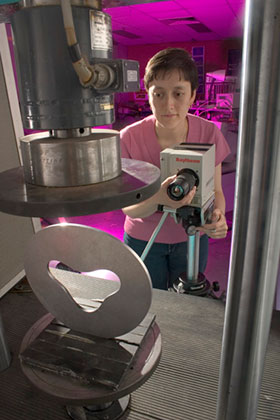Sonic thermography

The high replacement cost of Australia’s military aircraft means that they need to be kept flying long past the end of their design lives.
Maintenance inspections to detect corrosion, cracking and delamination of components have therefore become increasingly vital, and early detection is essential in the case of parts that are critical to flight safety.
One particular problem is that posed by small fatigue cracks, which tend to remain closed under normal conditions, and so, are very difficult to detect. While there are several conventional non-destructive inspection techniques currently in use, these are seen to be less than optimal for detecting these types of flaws.
Another inspection technology being investigated by DST Group and Australia’s overseas defence partners to overcome these shortfalls is sonic thermography. This involves the exposure of a test specimen to high frequency sound energy, which induces frictional heating at the surfaces of defects that are in close contact. The heating effect is then detected by an infrared camera.
An additional advantage sonic thermography offers over the other traditional non-destructive inspection methods is that it enables quick and easy inspection of large areas and complex shapes.

